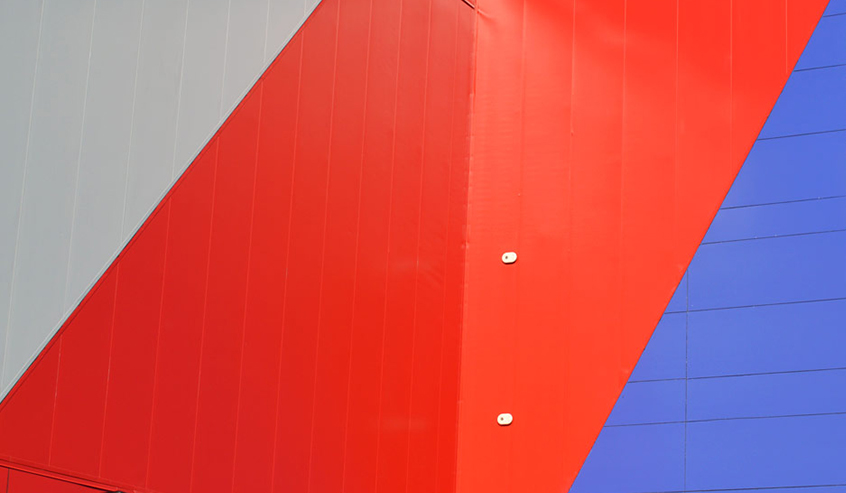In the architectural sector of the metal cladding industry, there are various paint coatings available. Coatings are commonly referred by resin base.
Below, you will find a synopsis of typical types of resins used.
Polyester
- Acrylic, vinyl or latex; polymer(plastic) distinguished by ester bonds
- Are usually water-based systems
- Latex paint is a general term which covers all paints that use synthetic polymers as binders (such as acrylic, vinyl acrylic (pva), styrene acrylic, etc.)
- Acrylic resins cost twice as much as vinyl, the balance in the mixture is determined by end use and pricing
- Typical architectural use of latex and acrylic coatings is interior wall and ceiling coatings and exterior residential “house” paint
- Polyester is group of coatings usually with a silicon additive for increased weatherability for architectural applications, referred to as smp, silicon-modified polyester
- This is an economical cost-effective coating, however still susceptible to chalk and fade
Enamel
- Oil-based products including nitro-cellulose based paints
- Usually referenced as “baked enamel”
- There is no generally accepted definition or standard for use of the term enamel paint
- Generally oil-based coatings have been superseded by superior formulations
Plastisol
- Polyvinyl chloride particles suspended in a plasticizing emulsion applied with thicker film tha other systems
- Used for high abrasion or corrosion exposure applications
- Features are low gloss, muted color selection, poor UV resistance
PVDF
- Polyvinylidene fluoride – the specific compound used to make the resin
- 70% of the resin must be this compound to meet AAMA standards
- PVDF coatings are resistant to chalking, UV damage, microbiological, and fungal growth
- Standard 2-coat, primer with topcoat
- Mica (mineral flakes) 2-coat, primer with topcoat
- Commonly used for metallics is a 3-coat with clear topcoat (for UV stability)
- ATAS stock colors are 70% PVDF systems
FEVE
- Fluoroethylene vinyl ether resin-based system
- Addition of vinyl component allows for higher gloss and vibrant pigments
- Disadvantages are the coating is less UV resistant and there is an increased chalk potential
Various additives can be used for surface alternatives such as textured finishes, also referred to as crinkle, wrinkled or sand which conceals oil-canning, improves abrasion resistance, and can retain dirt gloss levels with a matte finish or an enhanced gloss anti-graffiti properties

